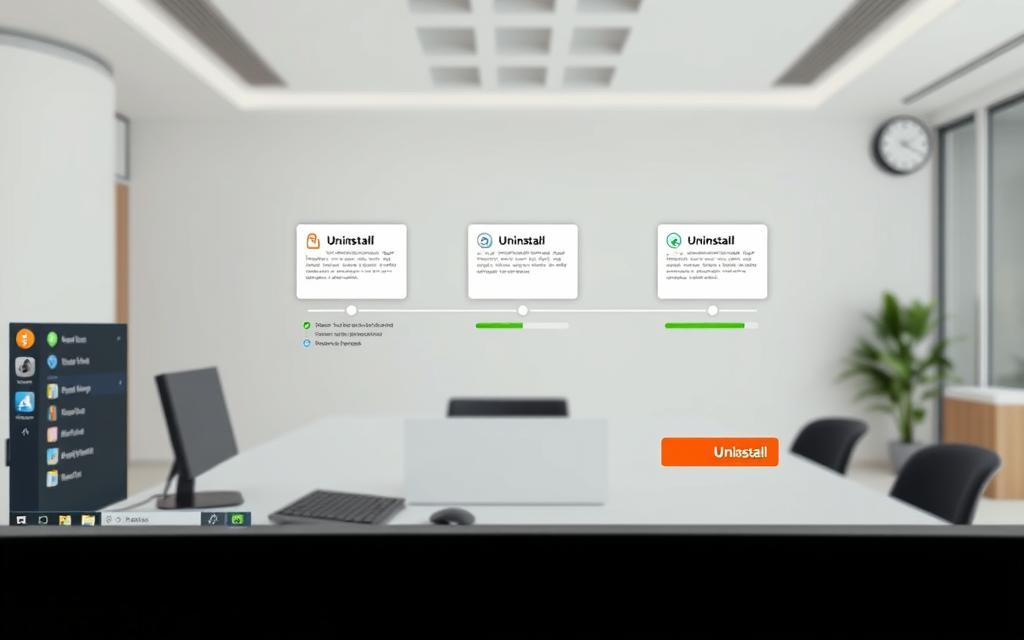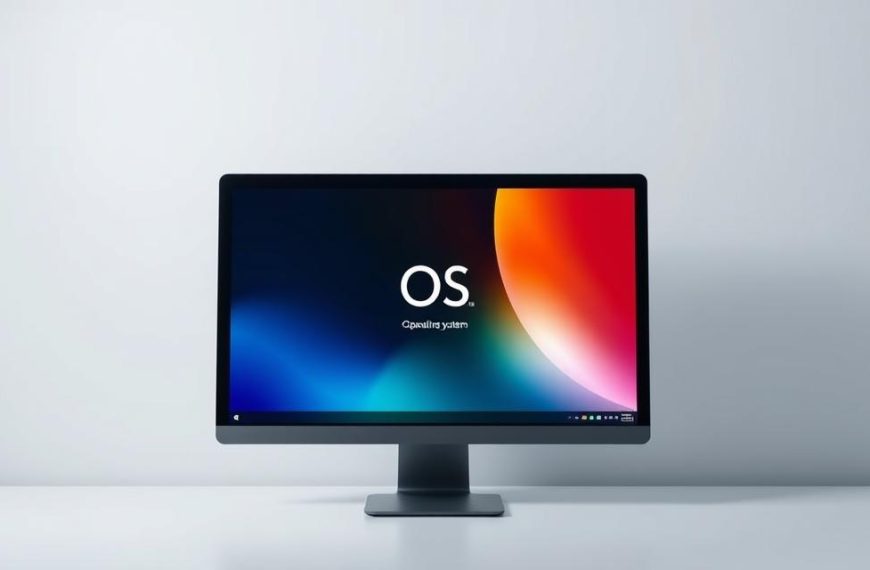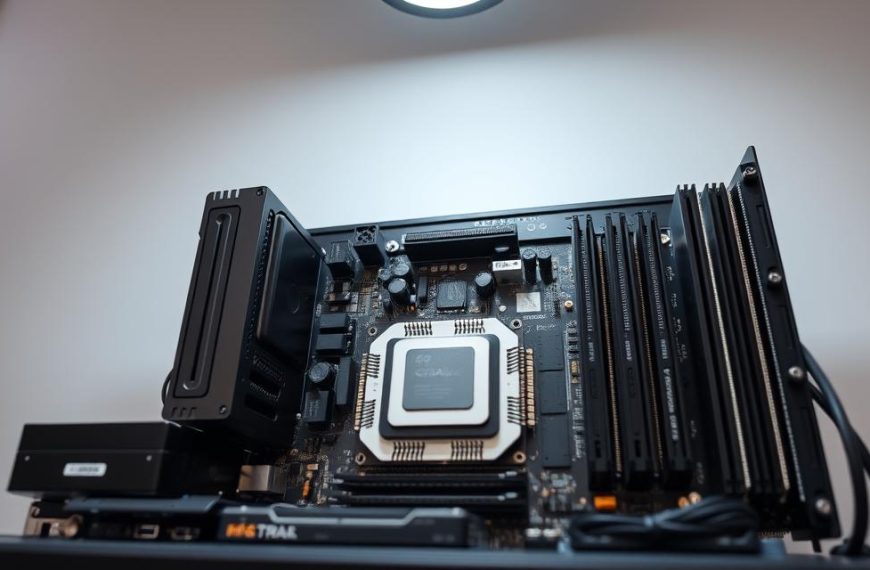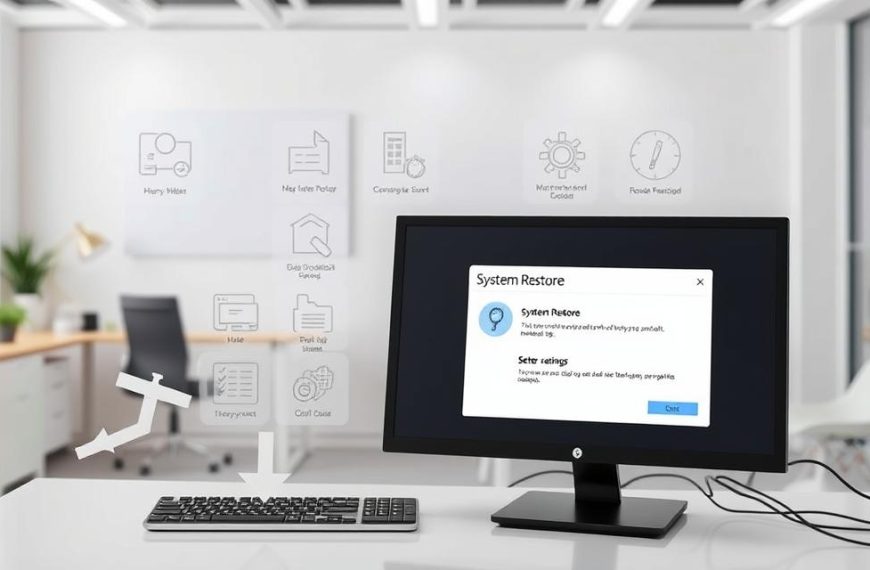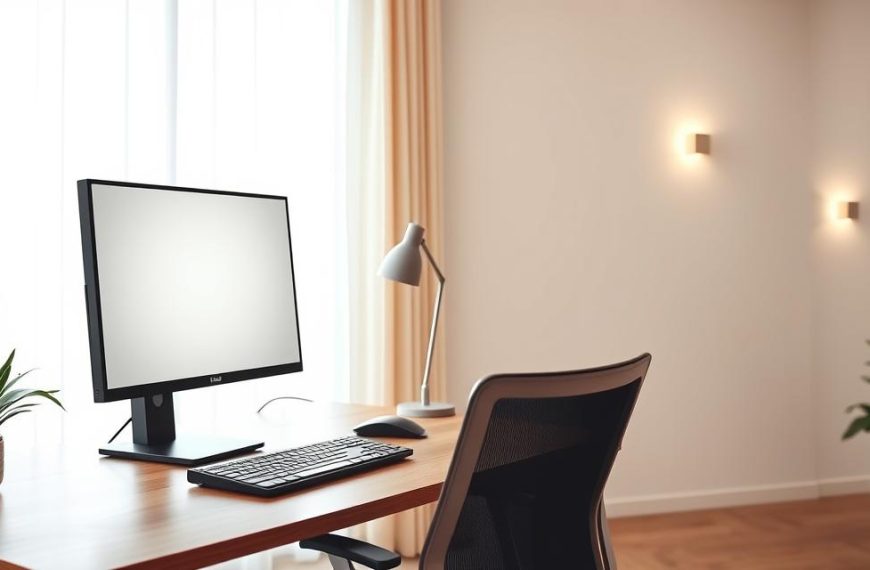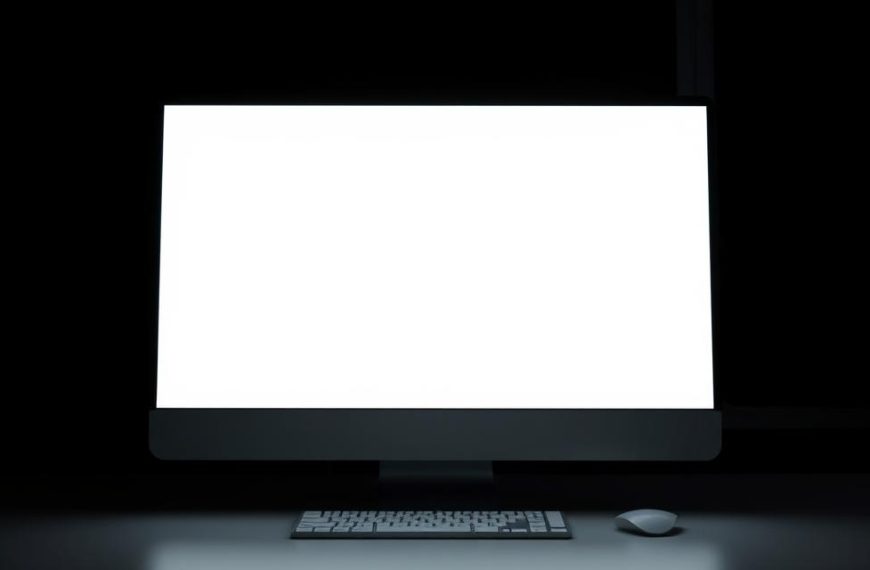Upgrading your machine or fixing performance issues might lead you to remove an operating system. This step needs careful handling to avoid losing data or causing system problems.
Many people do this after upgrading hardware, freeing up storage, or solving software issues. Getting ready properly keeps your computer working smoothly during the process.
A safe OS uninstall has key steps. These include backing up all your data, picking the right tools, and choosing the best method for your case.
This guide will walk you through the steps safely. By following these, you protect your important data and keep your system stable.
Understanding Operating System Removal
Removing an operating system from your computer is more than just deleting files. It’s a detailed process that needs careful thought about your system’s setup and how parts work together.
Many users think about removing an OS after getting a new version. They might not like the performance changes or miss certain features. Or, they might find the new OS takes up too much space, making them rethink their choice.
Dual-boot setups are another common reason for OS removal. Users install multiple OSes for testing or to see how they work together. But, they often end up using just one, wasting storage and making system upkeep harder.
Removing an OS in a dual-boot setup can be tricky. Different OSes manage disks and boot processes in their own ways. For example, Windows and Linux have different methods for handling these tasks.
When you remove one OS, you must fix the bootloader to only show the remaining system. If you don’t do this right, your computer might not start at all.
Managing partitions is also key in OS removal. Each OS usually has its own partition. Just deleting files won’t free up space – you need to merge or reallocate partitions correctly.
Knowing these details helps you remove an OS safely. With the right planning, you can free up space, simplify your system, or fix compatibility issues without causing more problems.
Prerequisites for a Safe Removal Process
Removing an operating system needs careful planning and the right tools. This ensures your computer works well and avoids data loss or hardware problems.
Essential Tools and Software Requirements
You’ll need a few key things before you start. A bootable USB drive or installation media for your new OS is a must. It lets you access your system without the old OS.
For Windows, Microsoft suggests using their Media Creation Tool to make installation media. Linux users can use Rufus or Etcher to create a bootable USB. These tools make sure your system boots correctly.
Partition management software is also vital. Tools like fdisk for Linux or Disk Management for Windows help manage drive partitions safely. Third-party tools offer easier interfaces for complex tasks.
Make sure your tools come from trusted sources. Downloading from safe websites helps avoid malware that could ruin your system preparation efforts.
System Preparation and Safety Checks
Backing up your data is the most critical step. Microsoft advises backing up important files to external drives or cloud storage. This keeps your data safe during the removal process.
Check if your disk has enough space for the backup and new OS. Most systems need at least 20GB of free space. Also, know your partition type—MBR or GPT—to choose the right removal method.
Do hardware checks to avoid problems after removal. Make sure your system meets the new OS’s requirements. RAM, processor speed, and graphics are all important.
Lastly, document your current system settings. Note your network settings, peripheral connections, and software licenses. This makes reconfiguring easier after the OS is removed.
These system preparation steps help make the process safe. With proper data backup and tool organisation, what was once risky becomes manageable.
How Do I Remove the Operating System from My Computer Safely?
Removing an operating system needs careful planning. It’s important to protect your data and system. Follow the right steps to avoid any damage.
Backing Up Your Critical Data
First, make a data backup. This is the most critical step. It keeps your files safe during the removal process.
Here are some backup options:
- External hard drives or USB storage devices
- Cloud storage services like Google Drive or Dropbox
- Network-attached storage (NAS) systems
- Disc media for smaller file collections
Make sure to back up important files like documents, photos, and music. Check that the backup is complete before you start. This data backup will give you peace of mind.
Selecting the Appropriate Removal Method
The right removal method depends on your situation. Different scenarios need different approaches for a clean removal.
Formatting the Hard Drive Completely
Formatting the hard drive completely is a thorough way to remove an operating system. It erases everything on the drive.
This method is best when:
- You’re selling or donating your computer
- You want to install a fresh operating system
- You’re experiencing persistent system errors
- You need to eliminate all traces of previous usage
Remember, formatting is permanent. Your data backup is key here, as it will remove everything from the drive.
Removing an OS from a Dual-Boot Configuration
Dual-boot removal is different when you have multiple operating systems. You need to remove one OS while keeping the other and ensuring boot functionality.
For Windows, BCDEdit helps manage boot entries. Linux users use fdisk or similar tools. The goal is to modify boot configurations before deleting partitions.
Successful dual-boot removal keeps your preferred OS working while removing the unwanted one. This method keeps your environment intact while achieving your goals.
Always research your specific dual-boot setup before attempting removal. Different combinations (Windows/Linux, macOS/Windows) need different approaches to dual-boot removal.
Step-by-Step Guide to OS Removal
Removing an operating system can be done with built-in tools or special software. Both methods need careful steps to avoid harming your system.
Method 1: Using Built-in OS Tools
Windows has tools for removing operating systems. The easiest way is through the system’s recovery environment.
If you installed Windows recently (in the last 10 days), you can use the rollback feature:
- Access Settings > Update & Security > Recovery
- Select “Go back to the previous version of Windows”
- Follow the on-screen prompts to complete the process
For more complex removals, like dual-boot systems, the BCDEdit tool is key. It manages boot settings:
- Open Command Prompt as administrator
- Type “bcdedit” to view current boot entries
- Identify the OS entry you wish to remove
- Use “bcdedit /delete {identifier}” command
- Confirm removal with appropriate parameters
System image recovery is another built-in option. It restores your computer from a saved system image, replacing the current OS.
Method 2: Using Third-Party Software
Specialised tools offer more features and are easier to use. Tools like OS-Uninstaller work on different platforms and are simple to follow.
These tools usually have a standard process:
- Create bootable media from the software
- Boot your computer from the created media
- Select the target operating system for removal
- Confirm the deletion process
- Complete any necessary partition formatting
Another third-party method is partition management software. These tools let you directly manage disk partitions, removing OS-specific parts.
These solutions often have safety features like automatic backups and recovery options. These help prevent losing data during removal.
Always check if the software works with your system before starting. Good tools have clear guides and support for different removal tasks.
Ensuring Data Protection Throughout the Process
Keeping your data safe is key when you remove an operating system. This process changes how your computer stores information. If not done right, it could mess up your data.
First, make sure you’ve backed up all your files. Just copying them isn’t enough. You need to check that all important files work right and are in the right place. This step helps avoid finding out your backups are bad after you can’t get to your old system.
Choosing the right storage media is also important. External hard drives are a good choice because they’re reliable and have enough space. Cloud storage is safe too, but you need internet to use it during system changes.
When you’re changing partitions and file systems, keep an eye out for error messages. These can warn you of data protection problems before they get worse. Stop the removal if you see any odd messages or errors.
If you have very important data, make extra backup copies. Store them on different devices. This extra step helps protect against losing data when you remove the operating system. Remember, once you delete something, getting it back can be very hard or even impossible.
After you’ve removed the OS, check that your backups work. This is your last chance to find any data protection issues before you start using your new system.
Common Mistakes and How to Avoid Them
Removing an operating system can lead to serious errors. These errors might damage your data or make your system unusable. It’s vital to know these mistakes to avoid them.
One big mistake is messing up partition management. People often delete the wrong partition, losing important data or system files. This happens when partitions look similar or when users hurry through the process without checking.
Another mistake is not making bootable media before starting. Without a USB or DVD with your new OS or recovery tools, your computer might not start.
“Partition errors cause nearly 40% of data loss during OS removal. Always double-check partition info before making changes.”
Many forget the importance of backing up all data. They might back up documents but miss out on:
- Browser bookmarks and settings
- Application configuration files
- Email client data and archives
- Custom system preferences
In dual-boot setups, things get more complicated. Users might mess up boot configuration using tools like BCDEdit. This usually happens when following old guides or making wrong assumptions about boot loaders.
The table below shows common errors and how to avoid them:
| Common Error | Potential Consequences | Prevention Strategy |
|---|---|---|
| Incorrect partition deletion | Data loss, system instability | Verify partition sizes and labels before deletion |
| No bootable media prepared | Unbootable system, recovery difficulties | Create bootable USB before starting removal process |
| Incomplete data backup | Partial data loss, configuration rebuilding | Use systematic backup checklist for all data types |
| Improper boot loader modifications | Dual-boot failure, system unbootable | Follow current official documentation for boot management |
Using tools incorrectly is another mistake. Tools like fdisk and partition managers need careful use. Users might pick the wrong options or think they work differently than they do.
Rushing through the process makes these mistakes worse. Take your time to research each step and understand what will happen. Always have a recovery plan ready before making system changes.
By knowing these common mistakes and how to avoid them, you can have a smooth OS removal process.
Conclusion
Removing an operating system needs careful planning and execution. It’s vital to protect your data and system integrity during this process.
The right removal method is key to a successful outcome. A clean installation means starting fresh without old files. This boosts system performance.
Tools like OS-Uninstaller make removal easier and safer. They handle complex tasks with little user effort. This reduces the chance of errors.
Following these steps ensures a safe removal process. Always back up your data and check your method before starting. This prevents system problems and data loss.
Your computer’s performance improves with good OS management. Whether you choose manual removal or automated tools, safety is essential. Use these strategies for a smooth transition.

